Ryan Hall's Blog, page 246
June 8, 2016
New Zealand’s Twin Runners Training in Kenya to be Featured in an Episode of Vice World of Sports

Photo: Courtesy of Vice World of Sports
In 2007, 17-year-olds Jake and Zane Robertson left their New Zealand home for the mecca of running camps in Iten, Kenya, and never returned home. For the past nine years, the identical twins (although Zane dyes his hair black to distinguish from his brother) have been living and training among world-class Kenyan runners in the Rift Valley, hoping to both discover and capture the Kenyan’s secret to being the fastest group of distance runners in the world.
Viceland’s “Vice World of Sports,” a weekly docu-series that delves into different sport cultures around the world and the athletes who do them, will be featuring the Kiwis’ journey in their latest episode airing tonight at 11 p.m. EST. The trailer for the episode suggests a more current day-to-day look at Jake and Zane’s life in Iten, while also examining how they fit into the community’s prevailing running culture and history.
As the show’s host Selema Masekela, a former ESPN and NBC Sports correspondent, put it in the trailer, “You guys are crazy. Like on paper, you crazy.” To which Zane replied with a nonchalant and accepting, “Yeah.”
Jake and Zane made the decision to move to Iten after Jake met Kenyan athletes at the 2006 world cross-country championships in Fukuoka, Japan, and decided they wanted to train with the best runners in the world. “We stayed because we loved the atmosphere,” Jake says. “We are extremists and love to push our limits.” But Jake also informs that it wasn’t as simple as that. “We did struggle with some of the villagers because we were some of the first white guys to come out here, people really judged us and we had to earn our respect.”
The episode airs at an opportune time—just months before the 2016 Olympics in Rio de Janeiro. It’s mentioned in the episode that Zane qualified for the Rio Olympics this summer after his performance in the 5,000m at the Commonwealth Games in 2015. “Right now, I’m starting my build-up, so I’m not in amazing shape,” Zane said in a separate interview. “However, I want to be in amazing shape in August when I step on the line at the Olympics. Timing to peak is essential.”
The twins aren’t sure how much longer they’ll continue to live in Kenya—the consensus seems to be for as long as they’re running professionally. But there’s no doubt that they’re dedicated to the sport and the training in Kenya they’ve committed themselves to.
“Two twins from New Zealand are living proof that Iten, Kenya, is the home of champions. Because this is the place where only one thing matters and it’s not the attitude, the genetics, or the color of your skin. In Kenya, it’s the struggle and it stops for nothing,” Masekela said at the episode’s conclusion.
The post New Zealand’s Twin Runners Training in Kenya to be Featured in an Episode of Vice World of Sports appeared first on Competitor.com.
A Half-Mile Road Race with a $10,000 Prize Purse!
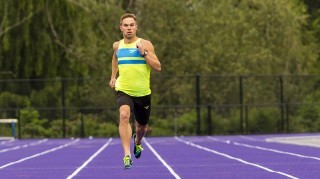
Photo: Stephen Matera
Middle-distance runner Nick Symmonds has been trying to do his part to promote the sport of running and no race is closer to his heart than an 800-meter race. The two-time U.S. Olympian and 2013 world championships silver medalist will be gunning for a shot a chance to run in the Olympics later this summer in Rio de Janeiro, a feat that will require a top-three finish in the event at the U.S. Olympic Trials on July 4 in Eugene, Ore.
On July 5, Symmonds has helped upped the ante at the fifth annual Springfield 800 road race, an 800-meter race down Fifth Street in Springfield, Ore. Symmonds approached Dole Packaged Foods about the idea to raise the stakes in order to attract top middle-distance running talent. The fastest male and fastest female to complete the course in the Run Gum Elite races will each receive a check for $5,000 courtesy of Dole.
“Our goal is to put together a diverse group of athletes to race in this unique event,” said Symmonds, the co-founder of Run Gum. “I used to travel across the globe for a chance to race for $5,000. We are excited to put cash in the pockets of athletes already in town for the Olympic Trials.”
The Springfield 800 is part of a community event called Run Springfield Night and will have multiple divisions including walkers, youth, masters, open and, new this year, a Dog 800 for pet owners and their dogs. The event will begin with a street festival beginning at 4 p.m. with races set to begin at 5:30 pm.
“On behalf of Dole Packaged Foods, we are proud to support what Nick means to the sport of track and field and the example he provides to live a healthy, active, and vibrant life,” said Matt Ingram, Director of Dole. “We are excited to support this event and help fund the dreams of America’s top middle-distance talent.”
The post A Half-Mile Road Race with a $10,000 Prize Purse! appeared first on Competitor.com.
June 7, 2016
Trail of the Week: Saugatuck Trail, Connecticut

Photo: Tom Robson
Our Trail of the Week feature is made possible through a partnership with Trail Run Project, a crowd-sourced collaboration by and for the running community. Thanks to Tom Robson for mapping and describing this route.
This trail, like most in Connecticut, is full of rocks and roots.
The start of this trail crosses multiple small bridges, and there are multiple opportunities to see Connecticut’s state flower, the mountain laurel.
Blue blazes will keep you on course, and throughout the route you will be treated to overlooks, water views and more. The singletrack trail hugs the shore and ridgelines of the Saugatuck Reservoir.
The Data
Miles: 10.7
Runnable: 95 percent
Average Grade: 4 percent
Max Grade: 32 percent
Total Ascent: 907 feet
Total Descent: -1,092 feet
Highest Elevation: 523 feet
For a closer look, check out the interactive map, data, photos courtesy of Trail Run Project:
The post Trail of the Week: Saugatuck Trail, Connecticut appeared first on Competitor.com.
Flat-Out Fast: 6 New Speedy Shoes for Summer
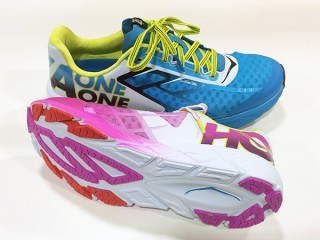
When you head to the starting line of a race or a speed workout, you want to feel light and fast. So instead of wearing the shoes you train in every day, you should lace up a pair of lean, mean, racing machines. Here’s a look at six light, agile new racing flats all but guaranteed to help you run faster than ever before.
Photo Gallery
1 of {count}
Back to Start
View Larger Image
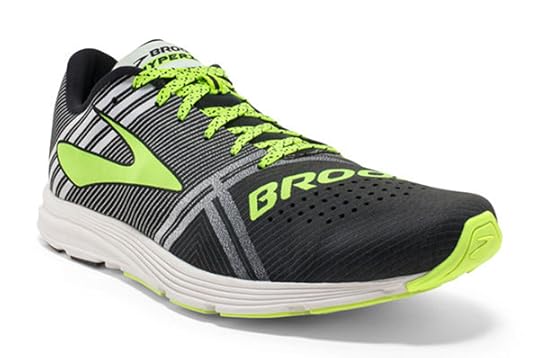
Brooks Hyperion
Highlight: An amazing one-piece upper that creates a sock-like fit.
Fit-Feel-Ride: Brooks went back to the drawing board to redevelop a fast, sleek racing flat and, according to our wear-testers, it succeeded. The featherweight Hyperion feels like it's part of your foot the moment you slip it on and lace it up. It's a snug-fitting shoe to be sure, but the one-piece perforated stretch woven upper material and semi-firm heel counter wraps the foot and secures it down to the flexible undercarriage made of moderately soft foam (BioMoGo DNA material) and small rubber outsole segments. The sock-like fit moves with your foot and never inhibits movement and doesn't feels at all cumbersome at fast speeds. (Our testers liked how the thinly padded tongue and flat laces completed the fit package.) The Hyperion strays in its design from the T7 racer it replaced in Brooks' shoe lineup (a lower heel-toe offset and a straighter last) and there are shades of the now-defunct Brooks Green Silence racing flat from a few years ago. In speed sessions, road races and tempo runs, we found this shoe to be full of "pop," meaning that it seemed to give off some noticeable energy return (without a bouncy ride) in every stride. Aside from being fast and light, the Hyperion is built to be more versatile (from 5K to the marathon) and durable than most racing flats. It might not be enough shoe for a marathon for most recreational runners, but it's certainly could be the tool of choice for shorter distances.
Price: $130; Weights: 6.3 oz. (men's 9); 5.3 oz. (women's 7); Heel-Toe Offset: 10mm; 22mm (heel); 12mm (forefoot)
View Larger Image
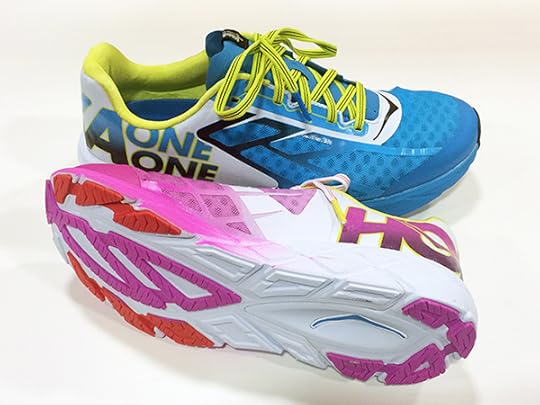
Hoka One One Tracer
Highlight: Hoka’s fastest, lightest and most responsive shoe yet.
Fit-Feel-Ride: Hoka has seemingly found a way to catch lightning in a bottle with this shoe—its first true racing flat. Part of Hoka’s new speed series of shoes, it’s decidedly not a maximally cushioned shoe on which the brand has built its reputation. Instead, it’s a featherweight, low-to-the-ground and super-speedy shoe that still feels substantial enough underfoot for longer races up to a marathon. It has a moderately soft midsole foam in the heel to cushion impacts that subtly transition to a firmer and more resilient forefoot foam that, combined with a slightly rockered shape from heel-to-toe, is aimed at catapulting the foot forward during the heel-toe transition. It feels light and speedy the moment you lace it up and our wear-test team raved about how quick and responsive it felt on all sorts of runs—long runs, tempo runs, intervals, recovery runs—but especially those at faster paces.
Price: $130; Weights: 7.0 oz. (men’s), 6.3 oz. (women’s); Heel-to-Toe Offset: 4mm; 22mm (heel), 18mm (forefoot)
View Larger Image

Mizuno Hitogami 3
Highlight: A lightweight, minimalist racer with exceptional flexibility and rebound.
Fit-Feel-Ride: Lightweight and low to the ground, the slipper-like Hitogami 3 offers amazing proprioceptive feel for the road, flexibility and energy return. Built on an elastic, thermal plastic Wave plate that’s sandwiched in the midsole between the heel and arch, this shoe gives off an energetic ride with a minimalistic feel. It has patches of durable carbon rubber and sections of a specialized rubber dot pattern in the outsole for optimal traction on both dry and wet surfaces. The stretchy mesh upper is secured by a slightly reinforce collar and a reinforcement overlay that doubles as the Mizuno logo. To many runners, this might feel like too little shoe for anything more than a track workout or 5K race. But if you like the “barely there” sensation of a shoe that won’t get in the way of your gait, this can be your tool of choice for running fast.
Price: $100; Weights: 7.6 oz. (men’s 9); 5.8 oz. (women’s 7); Heel-Toe Offset: 9mm; 21mm (heel), 12mm (forefoot)
View Larger Image
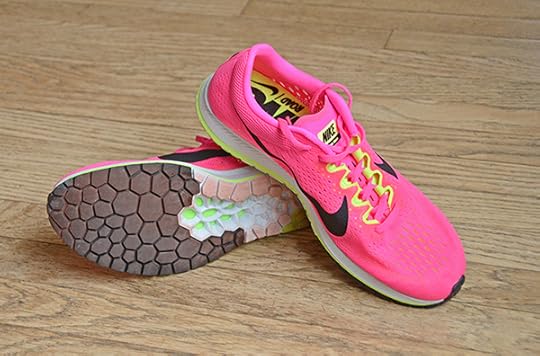
Nike Zoom Streak 6
[Editor's note: This shoe is due out in early to mid-June.] Highlight: An amazing one-piece upper that creates a sock-like fit.
Fit-Feel-Ride: No longer the tight, narrow toe of traditional racing flats, the Zoom Streak 6 has a more foot-shaped last that flares forward of the arch, particularly on the medial side to leverage the push-off power of the big toe. The Nike team also made sure the sole of their new racer didn’t have a specific flex point like many racers. Instead, a strong upward turn of the toe, as well as a slight rocker shape across the foot, allow for a rolling stride and the flex—which occurs wherever your foot most needs it—bounces back quickly due to a plastic flex plate embedded in the midfoot. As a nod to the popular Streak 3, which had a light, open, mesh with holes throughout, the new, engineered mesh on the Streak 6 also has holes that let you see your socks. Look closely, however, and you’ll see they are bridged with a thin layer of translucent yarn to maintain integrity and durability. Our testers report that it feels smooth, snug and protective, while light and fast. We took it on track workouts, road repeats and steady runs, and from the beginning felt like we could fly—without getting beat up from the ground underfoot or by a constrictive, rigid upper. The 8mm drop and zoom air under the heel provide plenty of support for later miles of the marathon when almost everyone’s form reverts to heel striking. But the protection doesn’t affect the weight or the ride at top speed, when you’re rolling fast off your midfoot and toes.
Price: $110; Weights: 6.7 oz. (men’s 9); 5.6 oz. (women’s 7); Heel-Toe Offset: 8mm; 20mm (heel), 12mm (forefoot)—Photo and text by Jonathan Beverly
View Larger Image
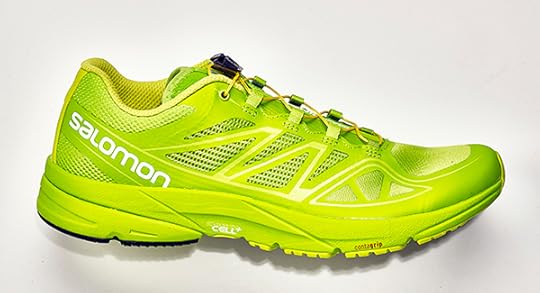
Salomon Sonic Pro
Highlight: A brand known for trail racing lets the rubber hit the road.
Fit-Feel-Ride: Salomon, one of the world’s biggest trail running brands, is making a foray into road running with the Sonic Pro. True to the brand’s recent heritage in trail racing shoes, it’s a light, fast, neutral-oriented shoe with a semi-firm and very responsive feel. It has a low-to-the-ground feeling, a modest amount of cushioning and a moderate heel-toe offset, so it’s definitely meant for strong-legged neutral, efficient runners and faster running. It also features the brand’s one-pull speed laces, which tuck into a “lace garage” at the top of the tongue. With only a little cushioning and a moderate heel-toe offset, it’s definitely built for efficient runners and faster running. Runners who like the agility, fit and tenacity of Salomon trail shoes will appreciate this new road shoe.
Price: $140; Weights: 8.3 oz. (men’s), 7.3 oz. (women’s); Heel-to-Toe Offset: 8mm; 30mm (heel), 22mm (forefoot)
View Larger Image
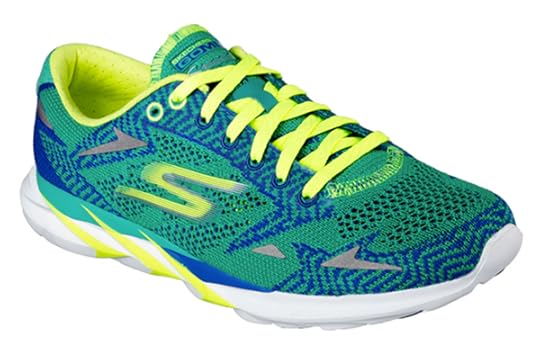
Skechers Performance GoMeb Speed 3 2016
Highlight: An updated version of the shoe Meb Keflezighi wore to win Boston in 2014.
Fit-Feel-Ride: A new flat-knit seamless upper offers a smidge of support with a foot-enveloping fit of a sock and helps cinch down the foot to the shoe’s chassis. This version also retains the TPU shank in the mid-foot to add to the responsive feeling of the shoe while the outsole opens up a bit to provide more compression on impact. It has a slightly rockered outsole, meaning it’s designed to help runners land more in the middle of their foot instead of the heel. It’s a light and agile shoe, but it has enough cushion and structure for a variety of training and racing efforts and isn’t so minimally designed that it can’t handle longer distances. The bottom line is that it’s versatile—it can handle speed work, tempo runs and 5Ks to a marathon.
Price: $130; Weights: 7.1 oz. (men’s), 5.4 oz. (women’s); Heel-to-Toe Offset: 4mm; 21mm (heel), 17mm (forefoot)

More Galleries
The post Flat-Out Fast: 6 New Speedy Shoes for Summer appeared first on Competitor.com.
Chasing Rabbits: How Pacers Earn Their Keep in an Olympic Year
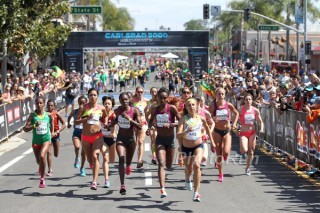
Pacers are used at both track and road races. Photo: PhotoRun.net
Matt Centrowitz, Mo Farah, and Galen Rupp are all poised to become household names this summer during the Olympics—at least in the homes of runners. All have achieved mind-blowing feats of speed, and have well-earned their revered status with Olympic medals in 2012. But each has, at some point in their running careers, reached a milestone thanks in part to a pacesetter.
Better known as rabbits, pacesetters are paid to lead others to a certain time goal through a certain distance of a race, usually dropping out at a designated point. Common in distances ranging from the 800 on up to the marathon, rabbits are sometimes the unsung heroes of the sport. They are also the subject of debate in some circles.
In an Olympic year, the frequency of rabbits inevitably goes up as athletes strive to reach all important qualifying standards. Watch any track and field event between now and early July’s U.S. Olympic Trials and you’ll likely spot a rabbit. “In non-Olympic years, you’ll see rabbits more toward the end of the season to help runners achieve their fastest times,” says Matt Scherer, an American middle-distance runner who extended his career by being a rabbit before retiring at the end of 2014. “But in Olympic years, their role becomes even more important and you’ll see much more of them.”
Scherer is widely considered one of the most consistent rabbits of all time, and for four years specialized in helping runners at the 800m on up to a mile. His pacing resume reads like a who’s who of the sport and includes the likes of Farah, Nick Symmonds, Bernard Lagat and many others.
What goes into the making of a rabbit? Scherer says that in his case, it was a matter of survival. He had impressive personal bests of 45.19 in the 400 and 1:46.11 in the 800, but that put him just off the cusp of the best runners in the U.S. in each event.
“I placed 12th at the 2008 U.S. Olympic Trials and knew that I was nearing the end of my career,” he explains. “Becoming a rabbit was one way to stay on the track doing what I loved and get paid for doing it.”
Erik Sowinski, an 800-meter specialist, is one of the athletes who has benefited from Scherer’s talents. Coming off a stellar indoor season, Sowinski is hoping to make the U.S. team next month in Eugene. He says that right now, about 90 percent of the races he runs feature rabbits. “It’s definitely beneficial,” he says. “It helps keep the stress off and makes for an honest race.”
Sowinski has experienced both good and bad pacers in his career. “You know who the solid ones are and can count on them,” he says. “Sometimes you might get one with less experience and then you tend to do your own thing. More often than not, though, it’s a positive for our sport.”
Rabbits come to meets either at the invite of the meet director, or sometimes at the request of runners. Often, they work out with the runners they might eventually pace.
“Once I decided to do this full time, I worked at it, often pacing 800-meter runners through their workouts,” says Scherer. “That gave me confidence heading into the meets.”
Every once in a while, a rabbit has been known to lead a race from start to finish. But most race directors discourage that and sometimes prohibit it in contractual language.
Rabbits Who Go the Distance
While rabbits on the track are de rigueur, they are somewhat controversial at the marathon distance. Of the six marathon majors, only London, Tokyo, and Berlin still use them. New York City dropped rabbits back in 2007, and Chicago followed suit in 2015. Boston has never allowed them.
Attitudes vary across the board on whether or not elites should be paced at the distance. For non-U.S. marathoners, however, rabbits can be vital in an Olympic year, one of the reasons Berlin uses them, says race director Mark Milde. “We had several runners who wanted to use our race to achieve Olympic qualifying times this year,” he says. “Ultimately, more than a dozen hit their needed standards. Rabbits allowed the runners to leave the driving to someone else.”
In a typical marathon, rabbits are paid to run as far as the 30K mark. In Berlin, the rabbits could also earn an incentive for every 5K they held pace beyond 25K. “Our typical pacers are fast half marathoners learning to transition to the marathon,” says Milde, “which makes it a win-win scenario. We also use elite marathoners who are at the end of their career and can run maybe a 2:08 to 2:14 for the full.”
The Chicago Marathon had its first event without pacers this past fall. Race director Cary Pinkowski says that he discontinued the practice in an effort to bring competition back to the athletes. “With the rabbits, we got away from the strategy and tactics that go with racing,” he says. “We felt we were getting away from the essence of what is Chicago.”
Pinkowski says he doesn’t worry that abandoning pacers will deter world-class athletes from continuing to pursue personal bests at Chicago. “The goal this year became winning the event, not setting a world record,” he says. “When you chase performance, you also get great competition.”
No matter how you slice it, rabbits are likely to be part of the sport’s makeup for a long time to come. For Scherer, whose running has now taken a back seat, the life of a rabbit was a good one. “It’s very satisfying to help someone achieve a personal best or take them to their desired times for the Olympics,” he says. “For me, it was a chance to travel and experience the sport as I would have liked to as a competitive runner.”
The post Chasing Rabbits: How Pacers Earn Their Keep in an Olympic Year appeared first on Competitor.com.
Suunto Introduces New GPS Watch, Enhanced Movescount Service

Suunto announced the introduction of the Spartan Ultra premium GPS watch today, as well as introducing an enhanced version of Movescount.com, Suunto’s online sports data tracking service.
The Spartan Ultra is being hailed as a “true multisport watch” with GPS, heart rate, an built-in accelerometer and more. It has preset modes for running, triathlon, swimming, cycling, adventure racing and snow sports. It also serves as a 24/7 activity tracker to log stats like steps, calories and active time.
“People have been asking about what’s next after the Ambit3 for quite some time now,” sais Sami Arhomaa, performance business director at Suunto. “So it’s a great pleasure to announce our next generation Suunto Spartan solution for athletic and adventure multisport.”
The Spartan Ultra has a color touch screen and retails for $699 (or $799 for the Spartan Ultra Titanium), plus an additional $50 for a heart-rate sensor. (See more about it in this video.)
In addition, Suunto launched a renewal for Movescount.com, which among other upgrades, now features sports-specific heatmaps based on millions of user-generated activities, which allows athletes to use the Suunto community to find great running routes and other areas to train. Heatmaps are available for anyone at Movescount.com.
The post Suunto Introduces New GPS Watch, Enhanced Movescount Service appeared first on Competitor.com.
VIDEO: The Sights, Sounds and Sleepless Fun of a Ragnar Trail Relay

Ryan Van Duzer, an endurance athlete, a video blogger, and TV personality from Boulder, Colo., offers an inside look at the sights, the sounds, the silliness and the sleepless fun of the Ragnar Trail Relay in Snowmass, Colo., on June 3-4.
VIDEO: The Wild and Wacky Burning Man UltraMarathon
The post VIDEO: The Sights, Sounds and Sleepless Fun of a Ragnar Trail Relay appeared first on Competitor.com.
Workout Of The Week: Long Runs With “Stuff”
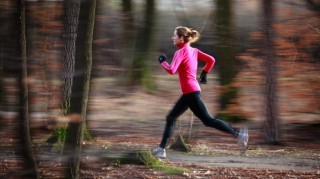
Adding "stuff" to your usual easy long run can stimulate adaptations and help boost your fitness. Photo: www.shutterstock.com
Stop slogging through the same old long run–add some stuff to it!
The weekend long run is a rite of passage for most runners. Everyone from your weekend warrior to the world champions include this staple workout as part of their weekly training schedule. Famed coach Arthur Lydiard seems to have cemented this tradition when his New Zealand troops would traverse their 22-mile route every weekend. If everybody is doing it and it has stuck around this long, it obviously has a lot of merit, but are you getting the most out of your long run, or are you just trudging through the miles and in dire need of a new stimulus?
Long runs are no different than any other workout. In order to continually adapt, the stimulus has to be slightly altered. In a set of repeats on the track, we might decrease the rest, increase the pace, or increase the length of the repetitions. For a long run, we can obviously increase the length and the pace, but those options are limited to an extent. The good news is that there are a few different ways we can squeeze out a little more adaptation. How do we accomplish that? Simply, by adding “stuff” to your long run.
MORE–Workout Of The Week: The Squires Long Run
“Stuff” refers to adding strides, surges, pickups, or progressions to the typical easy or steady long run. The goal in adding these components is to change the stimulus for adaptation ever so slightly. By adding in some faster running toward the end of the long run, you force recruitment of muscle fibers that generally are never trained at an easy or steady pace. By slightly changing which muscle fibers are recruited, you now train those harder-to-recruit fast twitch-type fibers under aerobic conditions, therefore increasing their endurance.
Strides and surges are two easy ways to get a little more bang for your buck during the long run without adding much undue fatigue. They both work by changing the muscle fiber recruitment slightly, and can prevent the post-long run flatness that often occurs. This happens because the faster segments change the tension in the muscles and leave you with some “pop” in your legs instead of staleness. Strides should be done immediately after the completion of the long run and should include four to ten by 100-meter runs in length at about your 10K race pace. This should be seen as an introductory session, which then progresses to surges over the following weeks. Surges should be done during the last 3-4 miles of the long run and should include segments where you pick it up to around 10K race pace and then back off to your easy pace for a short segment. I recommend starting with 5 x 30-second surges with two minutes of easy running between reps and work your way up progressively to where you’re doing 8-10 x 45 to 60-second surges with 2-3 minutes recovery in between. This should not be a taxing workout, but instead a comfortable surge that lets the legs loosen up a little bit.
Pickups and progressions are two slightly more challenging options for adding some spice to your long run. The goal of these runs is to press the pace down so that the body gets used to increasing speed, increasing the aerobic demand, and recruiting muscle fibers when glycogen levels are getting progressively lower at the end of the long run. Once again, we are looking at training muscle fibers that aren’t normally trained aerobically and triggering the body to become more efficient with using up its glycogen stores. Pickups should be introduced in small doses. Start by picking up the pace to marathon race effort or slightly faster during the last 5 minutes of your long run. Every few weeks, increase the length of the pickup by 5 minutes until you get to the point where the last 20 minutes of your long run is done at a quicker pace. Progression long runs, on the other hand, should take a gradual approach. Instead of spending the last bit of your long run making a sudden change in speed, spread that speed increase out over a longer distance. Start with a gradual progression over the last quarter of your long run (the last 4 miles of a 16 mile run, for example) and increase that until the last half of your long run is spent gradually ratcheting down the speed. The goal is the same: get down to just faster than marathon race pace by the end of the run.
RELATED: How Long Before I See The Benefits Of A Workout?
Anytime you add new workouts to your regime, it’s important to do so gradually. Keep your easy long run in the rotation, but start adding some “stuff” to it every other week. By adding “stuff” such as strides, surges, pickups and progressions to the long run, you’re increasing the amount of stimuli your body has to deal with, and more importantly, adapt to. So stop slogging through the same old long run–add some stuff to it!
****
About The Author:
Steve Magness is the head cross country coach at the University of Houston and also coaches several professional runners. He also maintains the blog ScienceOfRunning.com which is essentially a place for him to display his inner science and running nerd to the world. He owns a best of 4:01 for the mile and has a M.S. in Exercise Science from George Mason University.
The post Workout Of The Week: Long Runs With “Stuff” appeared first on Competitor.com.
June 6, 2016
Ultramarathon Tip: Succeed by Limiting the Negatives
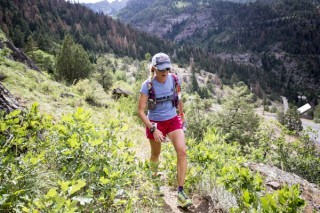
Photo: Scott Draper
Adapted with permission of VeloPress from Training Essentials for Ultrarunning by Jason Koop, coach to elite ultramarathoners. In his book, Koop reveals his highly effective ultramarathon training methods for ultrarunners of all abilities.
In my experience, most ultramarathon athletes, even the elites, find success through a lack of failure on race day. They achieve their goals, win races, and get those coveted belt buckles not because they ran one section very well but because they prevented the negative. They prevented time spent at 0 miles per hour. They prevented themselves from becoming a nauseous, sore, blistered, battered, and stumbling mess. They continued to be able to eat, drink, and locomote down the trail, even if it was not very fast.
Because so many things can go wrong, and the penalties for failure are high, “success by lack of failure” is a key element in successful ultramarathon running. These failure points are somewhat universal, as indicated by the research I cover further in my book, and help define the limiting factors for ultrarunning. The very small exception is elite athletes competing in 50Ks and 50-mile distances and flat 100Ks. This is because the finish line for the elite athletes in those races often comes before the failure points have a chance to impact performance.
All reasonably healthy individuals can locomote at the necessary speed to beat the cutoffs for any ultramarathon. I say this not as an opinion but as a biomechanical fact. The preferred walking speed for the average human is around a 19-minute mile (Levine and Norenzayan 1999; Browning and Kram 2005; Mohler et al. 2007). With a little effort, one can easily achieve 18-minute miles, which is a pace that would yield a 30-hour 100-mile finish.
As of this writing, Timothy Olson holds the course record for the Western States 100 at 14:46:44. This time works out to about 8:50/mile. When we tested Timothy in our lab, his lactate threshold pace was under 6:00/mile. At a pace slower than 6:00/mile, his aerobic system can keep up with his energy demand, delivering oxygen to his muscles at a rate that is sustainable with few negative byproducts. Having coached Timothy since he set that record, I can attest that on any given day, an 8:50/mile pace is not challenging for his cardiovascular system, even on terrain similar to that of Western States.
Yet if you look at his Cal Street section (from mile 62 to mile 78), you will see that he ran for 16 miles with a net elevation loss at a pace of nearly 9:00/mile. From the standpoint of cardiovascular fitness, that 9:00/mile pace, which is more than 50 percent slower than his lactate threshold pace, was easy. It was essentially a normal recovery-run pace for him.
So why, on race day, 62 miles into a record-setting performance, couldn’t Timothy run faster than his normal recovery-run pace? The answer lies in the fact that there are many stressors on race day, and success in an ultramarathon has far more to do with your ability to cope with the sum total of those stressors than with just the capacity of your cardiovascular system.
How you handle those other stressors determines whether you succeed due to lack of failure.
***
Jason Koop is the Director of Coaching for CTS and a coach to elite ultrarunners. His new book Training Essentials for Ultrarunning reveals his highly effective ultramarathon training methods. The book is now available in bookstores, run shops, and online. Learn more at velopress.com/koop.
The post Ultramarathon Tip: Succeed by Limiting the Negatives appeared first on Competitor.com.
Man and Dog Team Run Record-Setting 4:13 Mile
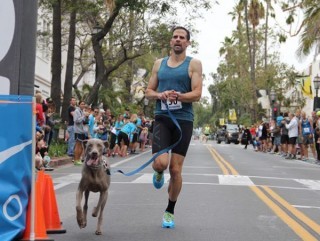
Brian Duff and his dog, Kaydom, cross the finish line at the Hoka One One State Street Mile on June 5 in Santa Barbara. Photo: Bring Back the Mile
Brian Duff is a fast runner, but he can’t outrun his dog.
Duff and his Weimaraner, Kaydom, won the Platinum Performance Dog Mile on Sunday at the 17th Hoka One One State Street Mile in Santa Barbara, Calif., crossing the finish line in a blistering 4 minutes, 13 seconds. That’s believed to be the fastest known human-dog mile performance ever, breaking the previous mark of 4:15 set by Josh Helton and his dog, Bro. The female human-dog winners were Mary Jones & Nala (5:17) of Ventura, Calif.
The crowd-pleasing human-dog race was just one of the highlights of the day. Thomas Poston of Goleta, Calif., and Alycia Cridebring of Davis, Calif. won close races in the men’s and women’s open division on the gradual downhill, point-to-point course in beautiful downtown Santa Barbara. Poston won the men’s race in 3:53, edging Scott Bauhs (3:53) and Darius Terry (3:54) to claim the $1,000 winner’s prize. Cridebring was the big star of the day, tearing up the roads in 4:23 to break the women’s course record by 10 seconds. In addition the $1,000 first prize, Cridebring also took home the $1,000 course record bonus.
“At our 17th running, we had an incredible record-setting day not only racing-wise, but also with 1,200-plus participants, and it is always great seeing the smiling faces of the finishers and spectators, humans as well as dogs,” said race director Megan Rheinschild. “A big ‘thank you’ goes out to our title sponsor Hoka One One, our volunteers, city officials and everybody who made this year’s event one to remember.”
RELATED: 7 Must-Do Mile Road Races
In the men’s Elite Mile, like recent editions, there was a large contingent together throughout the race, hitting 440 splits of 57 seconds, 1:57 (halfway) and 2:55. Poston, 23, a recent UC-Santa Barbara grad, surged in the final meters, letting out a victory scream as he edged Bauhs, last year’s fourth-place finisher, at the finish line. Terry, the UCSB assistant track coach, followed right behind, clocking 3:54 for third. An event record-tying six men went under the coveted 4-minute mark, with Aric Champagne (3:55), Nick Scarpello (3:58) and Derek Thomas (3:58) rounding out the top six.
“The crowd really lifted me in the final stretch, it was like magic,” Poston said. “At the end, I really went for it because I’m shutting down my season after this race, so I gave it everything that I had.”
With the deepest women’s elite field in the State Street Mile’s history, the longstanding course record would be challenged, and the top women did not disappoint. Like the men, there was a large group together from start-to-finish, hitting the halfway point in 2:11. At the end, Cridebring produced the best finishing kick to edge recent UCSB grad and 1500-meter school record holder Tori Tsolis, 4:23 to 4:24, followed by Kristen Findley and defending champion Tracee van der Wyk in 4:29, respectively. All four women were well under the previous course record of 4:33.
“This is my second road mile and second victory, so I’m pretty happy. I knew the field was good and we pushed each other all the way to the finish. It was a great day to race in Santa Barbara!,” said Cridebring, a UC-Davis grad and SRA Elite athlete who is looking to qualify in the 5,000 meters for the upcoming U.S. Olympic Trials track championships in Eugene, Oregon.
In the elite masters races (40and older), Jerome Vermeulen, 49, from Simi Valley, Calif. and defending champion Nancy Thomas, 46, from San Francisco, won overall titles in 4:18 and 5:01, respectively. Vermeulen also claimed the top age-graded male Masters title (97.86 percent)—edging Colorado’s Todd Straka (4:20, 97.10 percent)—as did Thomas for the women (94.52 percent), both pocketing $175.
Divisional race records were set by Aidan Scott, 10, of Solvang, Calif, 5:24 and Amanda Gable, 10, Goleta, Calif. (6:30) in the new 10-and-under division, as well as Cory Smith, 37, of Santa Barbara (4:16) in the men’s 30-39 division.
MORE: Bring Back the Mile
The post Man and Dog Team Run Record-Setting 4:13 Mile appeared first on Competitor.com.
Ryan Hall's Blog
- Ryan Hall's profile
- 21 followers



